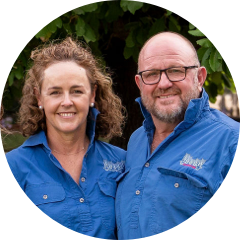Zonal management in the Riverine Plains
This project was completed in 2006.
WHY THIS PROJECT WAS NEEDED
This project aimed to identify the principles that led to productive, profitable and sustainable rotations in the Riverine Plains.
The project demonstrated economic benefits that can be achieved from zoning paddocks into two-to-three areas with similar parameters, and treating these areas according to their own unique characteristics.
In short: This project showcased benefits of zoning paddocks and tailoring input applications. EM38 surveys were effective in creating zones to optimise input allocation and improved gross margins were observed with variable rate prescriptions. A protocol was developed to help farmers in adopting zonal management.
In this project it was shown that these zones can be delineated easily and cost effectively with an EM38 survey. Testing of zones showed that variation in basic soil fertility parameters is significant. This variation includes significant differences in nitrogen and phosphorus status, CEC, ESP and Ca:Mg between zones. Once zones have been delineated, each zone can be soil tested, as opposed to soil testing an entire paddock. Once the soil fertility status of the individual zones is known, input prescriptions can be given according to the characteristics of each individual zone and hence a variable rate prescription for the entire paddock can be determined.
Project outcomes
The project showed that even when the same yield is still targeted across the entire field, inputs can be more appropriately allocated, resulting in economic and environmental benefits.
Variation in soil physical factors, particularly water holding capacity and subsoil constraints, as well as elevation have been shown in this project to impact on yield potential across a paddock.
Soil-water measurements that were taken during 2005, showed that the three zones in one field of barley had a yield potential of 4.5t/ha, 5.5t/ha and 6.5t/ha respectively. When this variation in yield potential is combined with the variation in underlying soil fertility, significant improvements in ultimate gross margin can be achieved.
For example, in 2005 and 2003, improvements in excess of $20/ha were observed when the most appropriate levels of nitrogen fertiliser were applied to three different zones within one paddock. Differential responses to phosphorus were also observed between zones, but more work needs to be done in this area.
Remote sensing techniques such as satellite and aerial NDVI and Gamma radiometrics were investigated in a pilot project. While there may be some use in commercial situations in the future, in most cases it was found that EM38 surveys and elevation surveys had more application initially.
A basic protocol has been written to help farmers adopt zonal management in an initial sense. This protocol is as follows:
- EM survey and zone paddocks
- Check EM and zones with farmer (yield maps, NDVI etc)
- Ground truth – soil cores & surface samples
- DSN test to zones
- Develop VR lime, gypsum, N and P prescriptions according to soil test results
- Crop monitor to zones
- Yield map
- Test strips rather than entire paddock VR in the first year is recommended in order to gain knowledge and confidence in the system.
The project demonstrated some of the economic benefits that can be achieved from zoning paddocks into areas of similar parameters and treating these areas according to their own unique characteristics.
PA tools that can be used effectively in the Riverine Plains area have been identified, culminating in the production of a protocol advising farmers on starting into zonal management in commercial situations.
Farmers adopting this protocol will realise economic and environmental benefits through the more appropriate allocation of inputs.
Further Reading
Find out more
For further information. please email info@riverineplains.org.au
Project investment
This was an investment of the Grains Research and Development Corporation (GRDC).
MORE ON Grains & Soils
Our research enhances food production, increases environmental resilience and improves community connection across the Riverine Plains. See how our research creates impact.
-
Grains
Business
-
Grains
Sustainability
-
Grains
-
Grains
-
Soils
Grains
-
Soils
Sustainability
-
Grains
Soils
-
Drought
Grains
-
Soils
Grains
-
Grains
-
Grains
Soils
-
Soils
Grains
-
Fodder
Grains
-
Grains
-
Soils
Sustainability
-
Grains
-
Soils
Sustainability
-
Grains
Soils
-
Sustainability
Grains
-
Grains
Sustainability
-
Soils
Grains
-
Soils
Climate
-
Grains
Sustainability
-
Soils
Climate
-
Livestock
Grains
JOIN RIVERINE PLAINS
Riverine Plains provides opportunities to see new research and innovation, connect with rural communities, and attend informative events.


